 Image search results - "national" Image search results - "national" |
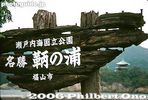
Sign for Tomonoura. Tomonoura is a National Important Traditional Townscape Preservation District (重要伝統的建造物群保存地区).
|
|

Road to Himeji Castle. From Himeji Station, the main road leads to the castle which can be seen in the distance.
|
|

Road to Inuyama Castle
|
|

Ferry between Tomonoura and Sensui island.
|
|

Road to Himeji Castle. Otemae Boulevard (Symbol Road). 大手前通り
|
|

Kiso River with Inuyama Castle in the distance
|
|
|

Uchibori Inner Moat
|
|

Inuyama Castle
|
|

Shinkyo Sacred Bridge, Nikko 神橋
|
|
|

Castle moat
|
|

Inuyama Castle
|
|

Bentenjima island near Tomonoura.
|
|

Path to Otemon Gate, the main gate to the castle. 大手門
|
|

Haritsuna Shrine
|
|
|
|

Otemon Gate, Main gate to castle. Reconstructed in 1937. 大手門
|
|

Sanko Inari ShrineThe shrine provides a short cut to the castle.
|
|
|

World Heritage Site marker. 世界遺産 姫路城
|
|

Steps to castle gate
|
|
|

World Heritage Site marker. 世界遺産 姫路城
|
|

Steps to castle gate
|
|

San no Maru. This area is ringed by cherry trees. 三の丸広場
|
|

Reconstructed Honmaru Gate
|
|

A stone's throw from Chojuji Temple, Jorakuji Temple (est. 708) of the Tendai Buddhist Sect boasts two National Treasures with its main hall and three-story pagoda. It is one of the Konan Sanzan Temple Trio accessible by bus from JR Ishibe Station.In the deep-green forest, you can see part of the pagoda's roof.
|
|

Special Historical Place marker
|
|

Inuyama Castle tower
|
|

Otsu Prince Hotel, the main venue of the 11th Shiga Kenjinkai International Convention held Nov. 12-14, 2007.
|
|

Canora Hall, venue for the Okaya International Exchange Association's 15th anniversary festival.
|
|

San no Maru cherry trees. The stone marker says that Himeji Castle is one of Japan's 100 Best Cherry Blossom Sites.
|
|

Castle tower
|
|

Convention Hall Omi at Otsu Prince Hotel. 第11回滋賀県人会世界大会のメイン会場。
|
|

Lobby of Canora Hall
|
|

Castle view from San no Maru.
|
|

Inuyama CastleNational Treasure
|
|

Entrance to convention hall at Otsu Prince Hotel. Every few years, all the Shiga Kenjinkai in Japan and overseas gather for a convention for a few days.
|
|

Entrance to the smaller hall
|
|

Main castle tower (donjon), called Tenshu. 大天守
|
|

Castle tower entrance
|
|

Reception counter. The 11th Shiga Kenjinkai International Convention was held in Shiga for the first time in 16 years. There are currently 71 Shiga Kenjinkai groups in Japan and overseas.
|
|

Reception counter with programs and newsletters in different languages.
|
|

Himeji Castle tower, a National Treasure. 大天守
|
|

Inside entrance
|
|

Main venue at the convention hall. A Shiga Kenjinkai is a group or association of people having ties to Shiga Prefecture who now live outside Shiga.
|
|

Exhibition area featuring native costumes, photos, etc.
|
|

Castle tower closeup. 大天守
|
|

More stairs
|
|

There is at least one Shiga Kenjinkai in all the prefectures in Japan, and around 15 Shiga Kenjinkai overseas. The hall was lined with banners of many Shiga Kenjinkai from Japan and overseas. Ehime, Brazil, Osaka, etc.
|
|
|

Castle tower, a National Treasure. 大天守
|
|
|

Toronto, Nagano, Hakodate, Argentina, and Kochi. Outside Japan, there is a Shiga Kenjinkai in Brazil, Peru, Mexico, Canada (Toronto, Vancouver, and Alberta), Argentina, USA (Seattle, California, and Hawaii), Hong Kong, Indonesia, UK, France, and Germany.
|
|

Lake Biwa Rowing Song (Biwako Shuko no Uta) exhibition panel by Philbert Ono at Okaya, Nagano.
|
|
|
|

Very steep
|
|

Kita-Kyushu, Southern California (Nanka), and Hiroshima
|
|

Lake Biwa Rowing Song Exhibition panels. 「琵琶湖周航の歌」英語版の展示コーナー
|
|

Castle ticket office and entrance. Admission is 600 yen for adults. Hours are 9:00 a.m. to 4:00 p.m. (September through May) or 9:00 a.m. to 5:00 p.m.(June through August).
|
|

Ninomaru Palace entrance, National Treasure. Open to the public, but photography inside is not allowed. 二之丸御殿
|
|
|

Western Canada, Yamaguchi, and Miyagi
|
|

Exhibition panels 展示コーナー
|
|

Path to Hishi Gate. 菱門
|
|

Palace entrance roof
|
|

Inside castle tower
|
|

Saitama, Kanagawa, France, Matsumae
|
|

New Zealand panel
|
|

In the deep-green forest, you can see part of the pagoda's roof. You can walk to Jorakuji (means "Constant Comfort Temple") from Chojuji Temple. From Ishibe Station, best to take a bus to Chojuji first, then walk downhill to Jorakuji. Entra
|
|
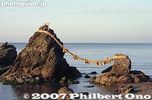
Meoto-Iwa Wedded Rocks off the coast of Futami-cho, Ise city, Mie Prefecture. 夫婦岩
|
|

Hishi Gate, Important Cultural Property. Pass though this large gate to proceed to the Ni no Maru compound. 菱門
|
|

Ninomaru Palace side view facing the garden. National Treasure
|
|
|
|

Brazilian school
|
|

View from the right of Hishi Gate
|
|

National Treasure
|
|
|

Japanese-English interpreting was provided
|
|

三経院 National Treasure
|
|

Taiko drummers from Okaya Roman Taiko
|
|
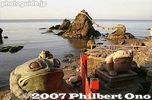
The shrine is dedicated to Sarutahiko and Ukano-mitama. Sarutahiko is a god which serves as a pathfinder guide. Deities for land/sea transportation safety. 二見�
|
|
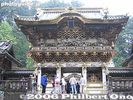
Yomeimon Gate, National Treasure, Nikko 陽明門
|
|

View from the right of Hishi Gate
|
|

Ninomaru Palace side view facing the garden.
|
|

Top floorThe top floor was called the Koran Room.
高欄の間
|
|

Opening ceremony started at 10:30 am on Nov. 13, 2007.
|
|

Full-house audience. Many international groups provided free entertainment.
|
|

Ni no Maru. After passing through Hishi Gate, this is what you see.
|
|

Ninomaru Garden
|
|

Portraits of castle lords and owners on top floorEleven generations of the Naruse Clan are shown here.
|
|

Otaka Tokio, Chairman of the National Federation of Shiga Kenjinkai, delivers a welcome message. 大高時男
|
|
|

Indonesian dance by Miyazaki Ani
|
|
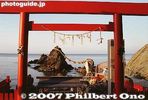
Futami Okitama Shrine does not have a main hall (Honden) like most other shrines. It worships the Okitama Sacred Stone in the ocean beyond the Wedded Rocks. 二見興玉神社
|
|
|

Ninomaru Garden
|
|
|

Dehara Itsuzo, Shiga Prefectural Assembly Chairman
|
|

Five-Story Pagoda and Kondo Hall, National Treasures 五重塔 金堂
|
|

Brazilian Dance by Ashinaga Gakuen Brazilian School
|
|

Sangoku Moat in Ni no Maru, 三国堀
|
|

Castle map
|
|

Top floor verandaThe fence is quite low and anyone can easily fall over...
|
|

A representative for Mekata Makoto, Chairman of the Shiga Prefecture City Mayors' Association and also the mayor of Otsu.
|
|
|

African drumming and dance
|
|

I-no-mon Gate (Important Cultural Asset) いの門
|
|

East Bridge to Honmaru and Honmaru Yagura-mon Gate
|
|

View of Kiso River
|
|

Natsuhara Satoru, Chairman of the Shiga Prefecture Town Mayors' Association and also the mayor of Taga town.
|
|

Goju-no-To (Five-Story Pagoda), National Treasure, Horyuji. The size of the roof gets smaller toward the top of the structure. 五重塔 仏舎利
|
|

African dance, a real crowd pleaser.
|
|

Ro-no-mon Gate (Important Cultural Asset) ろの門
|
|

Honmaru PalaceImportant Cultural Property
本丸御殿
|
|

Veranda
|
|

The Lieutenant Governor of Shiga (substituting for Governor Kada who was hosting the Emperor and Empress visiting Shiga) bestows awards to people who have long contributed to promoting Shiga.
|
|

Horyuji Goju-no-To (Five-Story Pagoda) National Treasure. Houses a few bones of Shakyamuni Buddha. 五重塔
|
|

In Okaya, Nagano, Nakamura Naoko singing "Lake Biwa Rowing Song." This is the first time this English version was sung in public outside Shiga Prefecture.
|
|

Seto Inland Sea as seen from Megishima, Kagawa Pref.
|
|

Path to Ha-no-mon Gate はの門
|
|

Foundation of castle tower天守閣跡
|
|

View of castle grounds
|
|

Chairman Otaka gives letters of appreciation to Shiga Kenjinkai members for meritorious service. In the afternoon, the keynote speech was given by Donald E. Devaney who talked about historical ties between Shiga and the U.S. (photography was not allowed).
|
|

The Five-Story pagoda has a thick wooden pillar in the center going from the bottom to the top. Only the top part of the building is in contact with the central pillar and works to counterbalance earthquake swaying.
|
|

Nakamura Naoko singing "Lake Biwa Rowing Song." The first Japanese person to sing the song in public. 「琵琶湖周航の歌」の英語版も歌われた。
|
|

Path to Ni-no-mon Gate
|
|

Top of castle tower foundation天守閣跡
|
|

Kiso River
|
|

In an adjacent hall was the "Social Salon" with exhibits by most of Shiga's cities and towns and by various Shiga Kenjinkai. Many tourist pamphlets (mostly in Japanese) were provided.
|
|

You can enter or see inside the buildings, but no photography is allowed inside.
|
|

Nakamura Naoko singing "Lake Biwa Rowing Song" up to verse 3. 中村直子さんが三番まで歌われた。
|
|

San-mon Gate 山門 MAP
|
|

Ni-no-mon Gate (Important Cultural Asset) にの門
|
|

Top of castle tower foundation天守閣跡
|
|

Inuyama Castle roof
|
|

Hikone's exhibit in the Social Salon, featuring red samurai armor from the Ii clan.
|
|

Daikodo Hall and Five-Story Pagoda, National Treasures 五重塔
|
|

Canora Boys and Girls Chorus
|
|

Inside Ni-no-mon Gate. A bottleneck gate designed so not many enemy soldiers can pass through at one time.
|
|

Castle tower foundation天守閣跡
|
|
|

National high school soccer tournament award from Yasu. (Yasu High School won the national title in Jan. 2006.)
|
|
|

Grand finale dance called Itomachi Ko-uta
|
|

Ho-no-mon Gate (lower left)
|
|

Mizu-no-ichi Gate, Important Cultural Property.
|
|

Mizu-no-ni Gate, Important Cultural Property
|
|

Mizu-no-san Gate
|
|

Castle roof underside
|
|

Honmaru Palace as seen from the castle tower foundationImportant Cultural Property
|
|
|

Exhibit by Takashima city.
|
|
|

Storehouse
|
|

Honmaru PalaceImportant Cultural Property
|
|
|
|
|
|

Koshi no Kuruwa storehouse for rice and salt
|
|

Moat between Ninomaru (left) and Honmaru (right)East Bridge in the distance.
|
|
|

Overseas Shiga Kenjinkai exhibits.
|
|
|

Inside storehouse
|
|

Ninomaru Kita Otemon GateImportant Cultural Property
二之丸北大手門
|
|

Castle photo exhibition
|
|

Shiga Kenjinkai from Canada and Mexico.
|
|
|
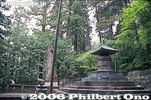
Tokugawa Ieyasu's mausoleum
|
|

Family crest on roof tiles. The family crest of the resident warlords who repaired the castle remain on the roof.
|
|

Warehouse wall
|
|
|

Niigata Shiga Kenjinkai exhibit included stuff from Hokuriku region. Web site here.
|
|

Horyuji temple Kondo Main Hall, the world's oldest wooden building at 1,300 years old. National Treasure 金堂
|
|
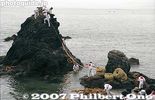
The new ropes are strung across the two rocks. A small rope tied to the end of the large rope is used to pull the large rope up the rock.
|
|

The family crest of the resident warlords who repaired the castle are displayed. The warlords include Hashiba (later Toyotomi) Hideyoshi, Ikeda Terumasa, Honda Tadamasa, Matsudaira Tadaaki, Matsudaira Naomoto, Sakakibara Tadatsugu, and Sakai Tadazumi.
|
|

Tonan-sumi Turret from the street
|
|
|
|

Exhibits by other Shiga cities.
|
|

Kondo Main Hall, National Treasure and Horyuji's most important building. However, on January 26, 1949, much of the first floor was destroyed by accidental fire. 金堂
|
|

The family crest of the resident warlords who repaired the castle remain on the roof.
|
|
|
|

Shiga Prefecture exhibited some plastic fish.
|
|

Kondo Main Hall houses 13 Buddha statues. 金堂
|
|

Koshi Kuruwa storehouse (Waist Quarter) for salt and rice.
|
|
|
|

Biwa masu trout above, and nigorobuna crucian carp (funazushi) on bottom.
|
|

Kondo Main Hall, National Treasure. It has some Chinese design elements. 金堂
|
|

Gate guardian (left side)In the San-mon Gate
|
|

Inside storehouse
|
|
|

Caffy, official mascot for the Sports Recreation event in 2008.
|
|

Kondo Main Hall, National Treasure 金堂
|
|

He-no-mon Gate への門
|
|

Lord's Room (Jodan no Ma)This room was used by the castle lord.
|
|

Popular Hiko-nyan from Hikone also made an appearance in the Social Salon.
|
|

Kondo Main Hall, National Treasure 金堂
|
|

View from He-no-mon Gate
|
|

O-sugisama Sacred Cedar TreeThis tree existed even before the castle was built over 650 years ago. It stood 24 meters tall, higher than the castle tower. It absorbed hits by lightning in place of the castle and also protected the castle tower from high winds. The tree then came to be worshipped as castle guardian.
The tree was severely damaged during the Ise-wan typhoon in 1959, and died in 1965.
|
|

Hiko-nyan is a helmeted cat, related to the Ii clan.
|
|
|

Chi-no-mon Gate in the distance. On the left partially hidden is To-no-ichi Gate. ちの門
|
|

Foundation of the Nana Magari-mon Gate
|
|

On Nov. 13, there was a symposium called "Shiga and Cultural Exchanges."
|
|
|

To-no-ichi Gate との一問
|
|

Reconstructed turret永勝庵
|
|

One panelist was a priest from Enryakuji temple on Mt. Hiei.
|
|
|

One end of To-no-ichi Gate
|
|
|

The Social Salon was a good place to hang out between meetings and symposiums. It also had mini presentations by several overseas Kenjinkai.
|
|

To Daikōdō Hall
|
|
|
|

View of castle tower from Chi-no-mon Gate
|
|

Interesting slide show by the Southern California Shiga Kenjinkai showing their activities.
|
|

All the while, the cheering section chants and wave streamers.
|
|

He-no-mon Gate in the distance. As seen from Chi-no-mon Gate.
|
|

A comedian from Mt. Ibuki in Maibara.
|
|

Chi-no-mon Gate (after passing through)
|
|

Dinner banquet hosted by Shiga Prefecture on Nov. 13, 2007.
|
|

Well Turret sign. The turret is to defend the rear of the castle. It has three rooms, one of which has a 16-meter deep well. 井郭櫓
|
|

Governor Kada Yukiko gives a welcome message in both Japanese and English. In Japan, extremely few politicians can do this. Nice that Shiga has a bilingual governor who once studied in the U.S.
|
|

Gate guardian (right side)In the San-mon Gate
|
|
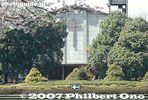
International Christian University is one of Japan's leading English-speaking universities.
|
|

Sakurajima 桜島Part of Kirishima-Yaku National Park.
|
|
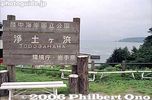
Jodogahama sign. Part of the Rikuchu-Kaigan National Park.Rikuchu-Kaigan National Park, Iwate Pref.
|
|
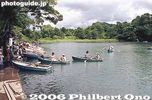
Goshikinuma is a chain of five colorful volcanic ponds. Pleasant hiking trails lead to the ponds. Part of the Bandai-Asahi National Park. Bishamon-numa Pond is the largest of the five and it has rental rowboats. 毘沙門沼
|
|

Well Turret. The well is 16 meters deep with water 1 meter deep.
|
|

Kanpai!
|
|

Chūmon Gate, National Treasure 中門
|
|
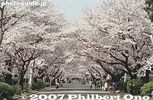
The middle of the campus has a long, straight road lined with cherries.
|
|
|
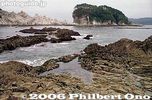
Jodogahama literally means Paradise Beach.Rikuchu-Kaigan National Park, Iwate Pref.
|
|

Bizen Gate entrance to Honmaru, also called Bizen-maru. Notice the coffin stone on the right of the gate. (Important Cultural Property) 備前門
|
|

Buffet
|
|

Chūmon Gate, National Treasure 中門
|
|
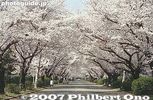
It's peaceful and quiet, and the cherries are stunningly beautiful when in full bloom.
|
|

Dramatic rock formations.Rikuchu-Kaigan National Park, Iwate Pref.
|
|

Colorful koi carp fish in Bishamon-numa Pond, Fukushima Pref. 毘沙門沼Bandai-Asahi National Park
|
|

Stone coffins at Bizen Gate. Due to a shortage of stones during the castle's construction, many stone coffins unearthed from the tumulus on the hill of the castle were used in the rock walls. The stone coffins were replaced by real stones during the cDue to a shortage of stones during the castle's construction, many stone coffins unearthed from the tumulus on the hill of the castle were used in the rock walls. The stone coffins were replaced by real stones during the castle restoration in the 1960s.
|
|

Koto entertainment by Maiko, a well-known singer-songwriter from Shiga. 真衣子
|
|

Even the corridor is a National Treasure. Has about 150 wooden pillars. 西院伽藍の廻廊
|
|

Cherry blossoms tunnel
|
|

Bishamon-numa Pond, Fukushima Pref. Bandai-Asahi National Park 毘沙門沼
|
|

"Sama" hole for dropping stones, throwing spears, etc.
|
|

On the morning of Nov. 14, a boat cruise on the Michigan. Narration in both Japanese and English explaining about Lake Biwa's ecology. I was unable to join this cruise, so no photos.
|
|

Chūmon Gate and Kondo Hall
|
|
|
| 1521 files on 7 page(s) |
1 |
 |
 |
 |
 |
|